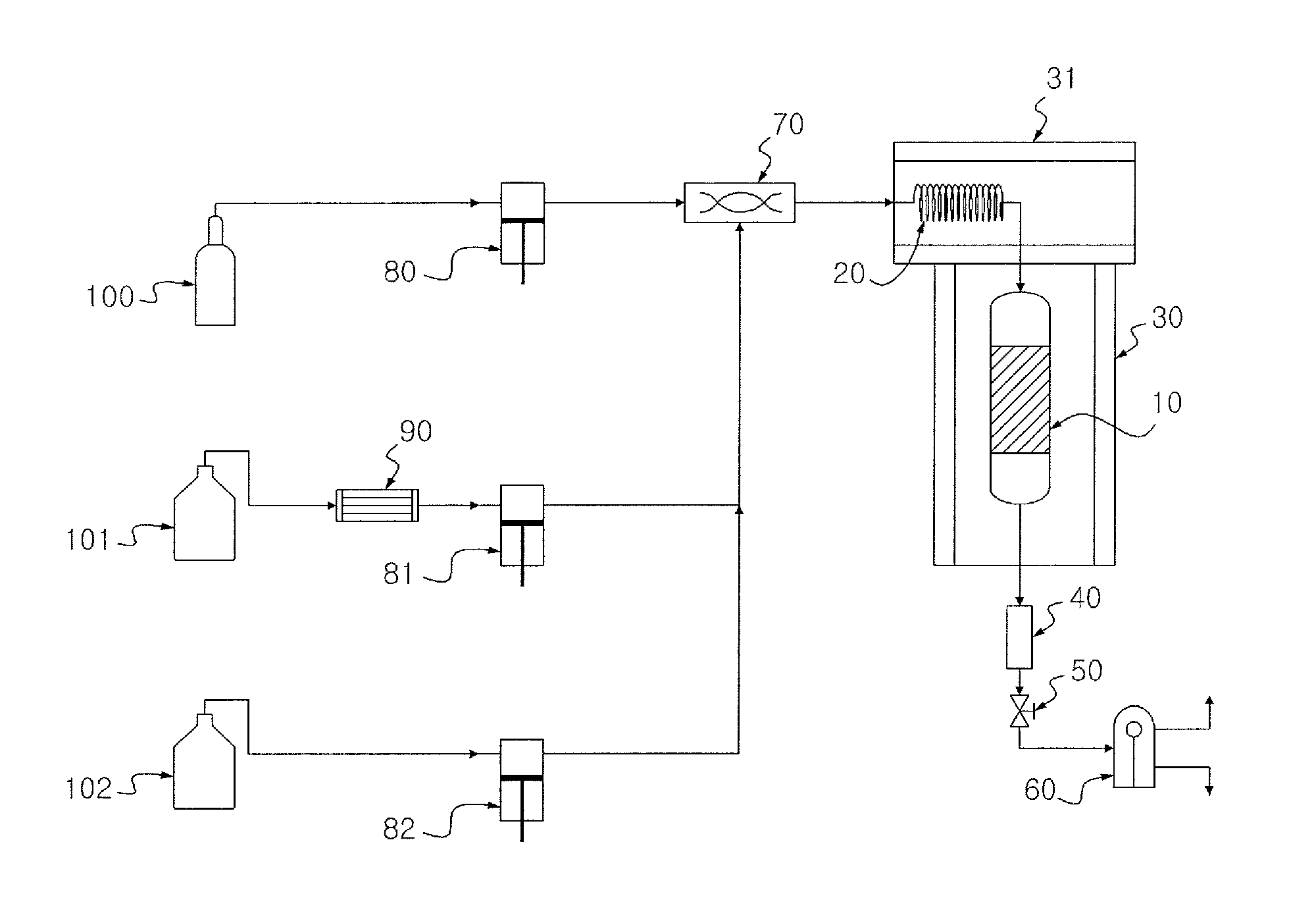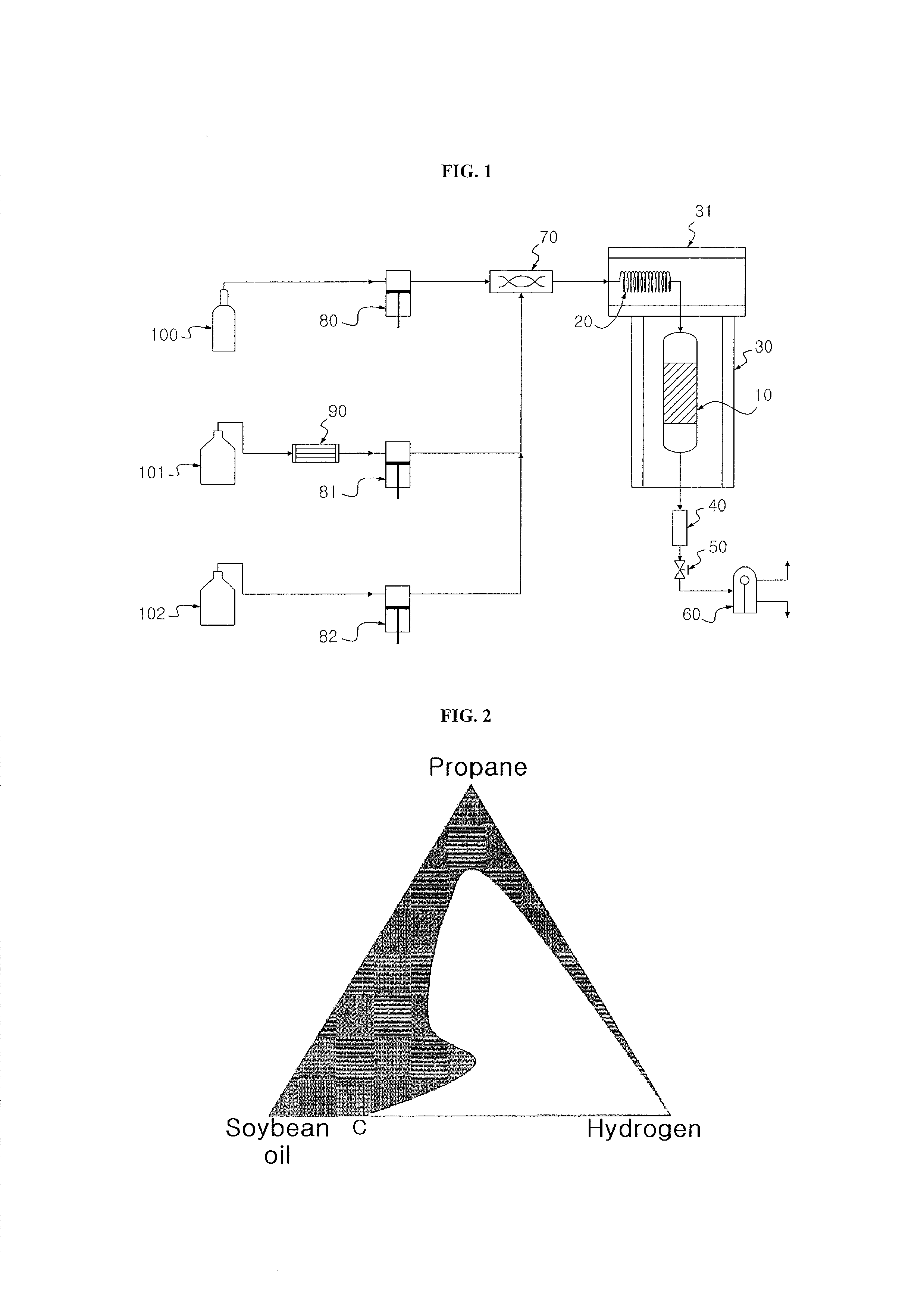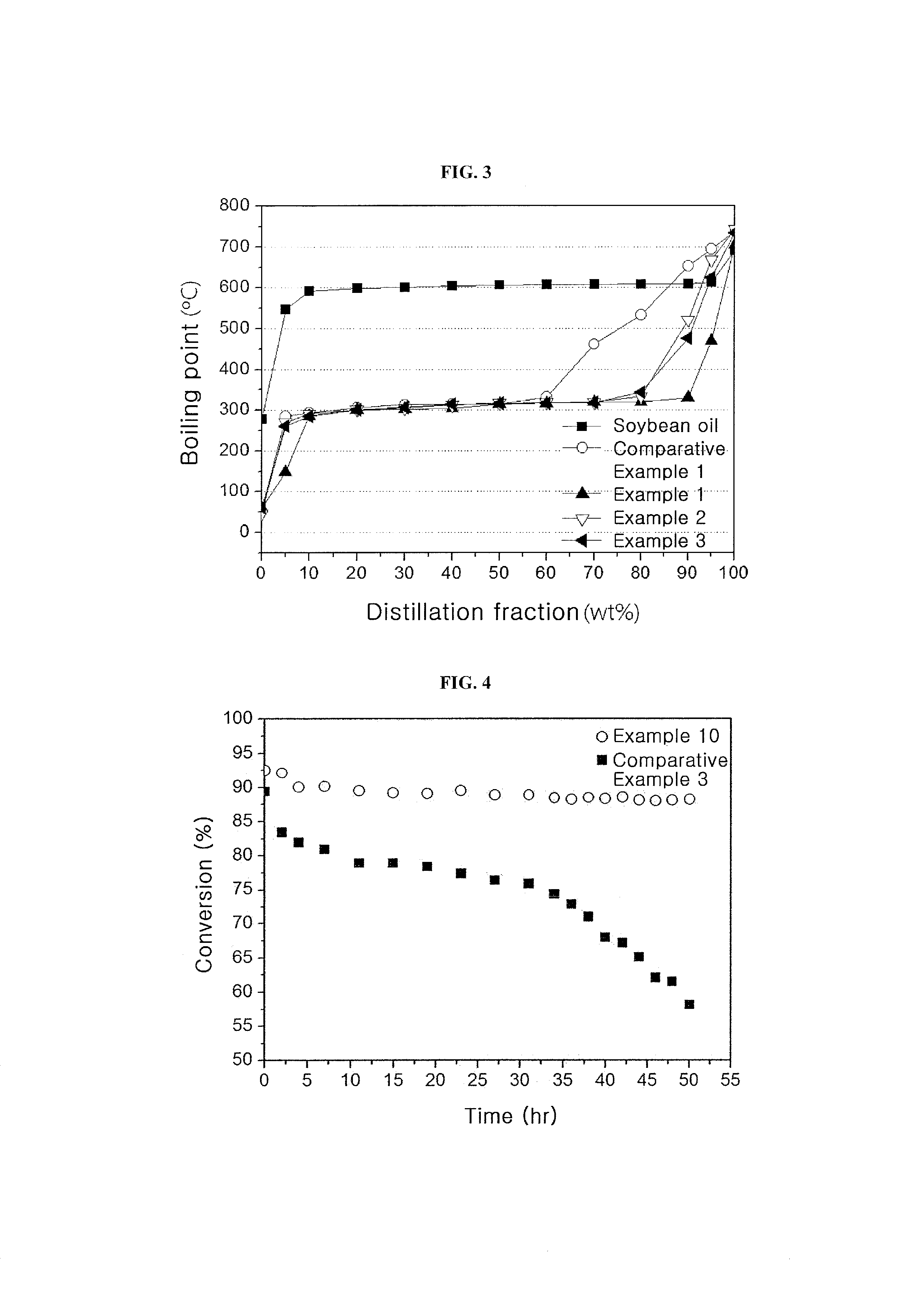Method for producing renewable fuel using supercritical fluid
a supercritical fluid and renewable fuel technology, applied in the direction of physical/chemical process catalysts, fatty acid chemical modifications, metal/metal-oxide/metal-hydroxide catalysts, etc., can solve the problems of fuel leakage during long-term use, engine system including metal parts corrosion, and stability problems, so as to achieve the effect of lowering reaction temperature and yield
- Summary
- Abstract
- Description
- Claims
- Application Information
AI Technical Summary
Benefits of technology
Problems solved by technology
Method used
Image
Examples
example 1
[0070]20 g of Co—Mo / Al2O3 (Co 2.8 wt %, Mo 7.6 wt %) as a catalyst was introduced into a 120 ml continuous reactor and was thermally treated with nitrogen (flow rate=100 ml / min) at 350° C. Thereafter, 15 vol % H2S / H2 at 400° C. was allowed to flow at a rate of 50 ml / min for 3 hr to activate the catalyst. After the reaction temperature was reduced to 300° C., a mixture of hydrogen, soybean oil and supercritical hexane was introduced into the continuous reactor. In the mixture, the hydrogen / soybean oil molar ratio was adjusted to 9.6:1 and the soybean oil / supercritical hexane weight ratio was adjusted to 1:1. The mixture was allowed to react at a hydrogen pressure of 50 bar for 5 hr while maintaining the liquid hourly space velocity at 2.0 h−1. After liquid products from a discharge port of the continuous reactor were collected per one hour, a renewable fuel was separated from the hexane by fractional distillation.
example 2
[0071]A renewable fuel was produced in the same manner as in Example 1, except that supercritical propane was used instead of the supercritical hexane and the fractional distillation was omitted.
example 3
[0072]A renewable fuel was produced in the same manner as in Example 1, except that supercritical carbon dioxide was used instead of the supercritical hexane, the fractional distillation was omitted and the hydrogen pressure was changed to 80 bar.
PUM
| Property | Measurement | Unit |
|---|---|---|
| flow rate | aaaaa | aaaaa |
| temperature | aaaaa | aaaaa |
| pressure | aaaaa | aaaaa |
Abstract
Description
Claims
Application Information
 Login to view more
Login to view more - R&D Engineer
- R&D Manager
- IP Professional
- Industry Leading Data Capabilities
- Powerful AI technology
- Patent DNA Extraction
Browse by: Latest US Patents, China's latest patents, Technical Efficacy Thesaurus, Application Domain, Technology Topic.
© 2024 PatSnap. All rights reserved.Legal|Privacy policy|Modern Slavery Act Transparency Statement|Sitemap



